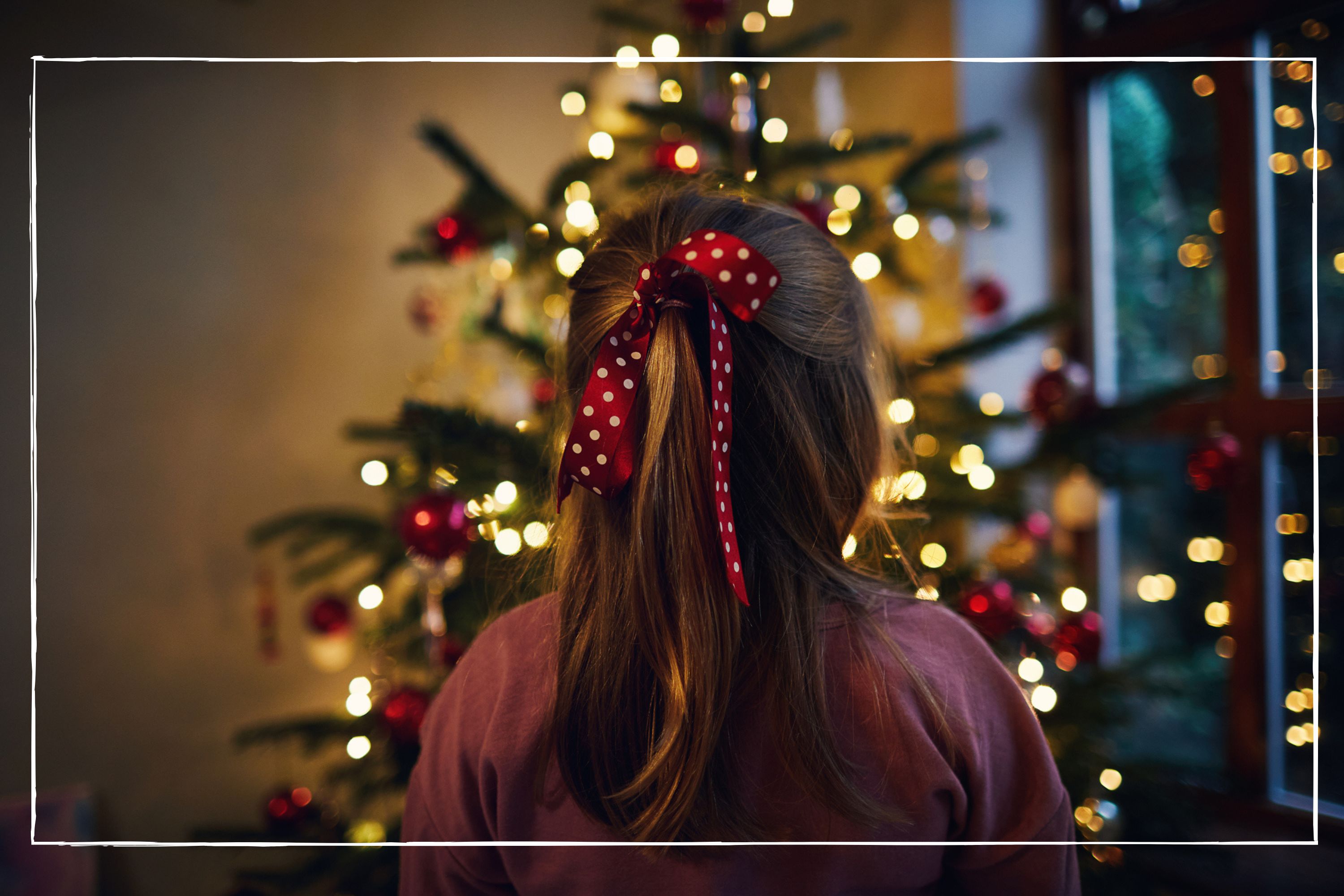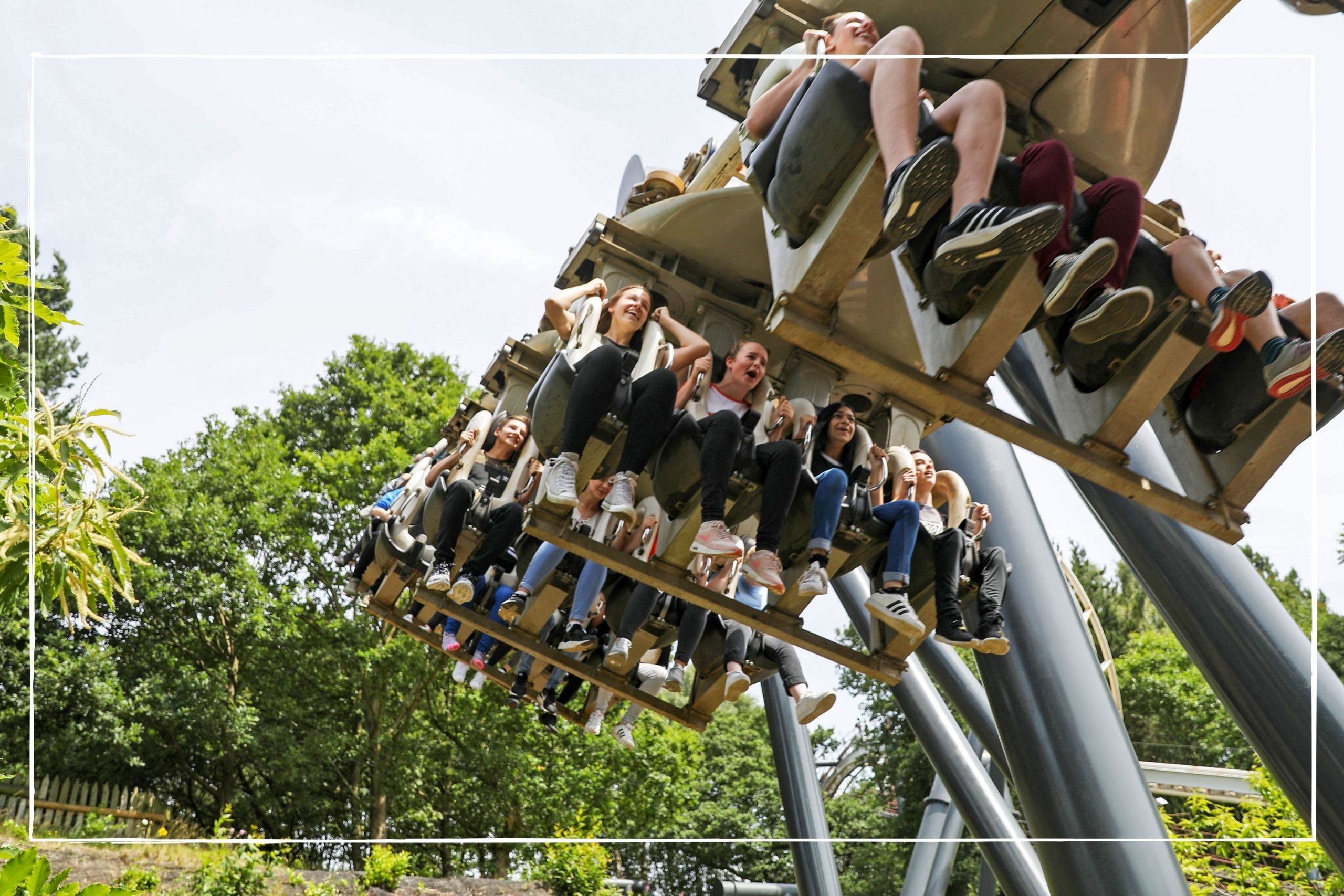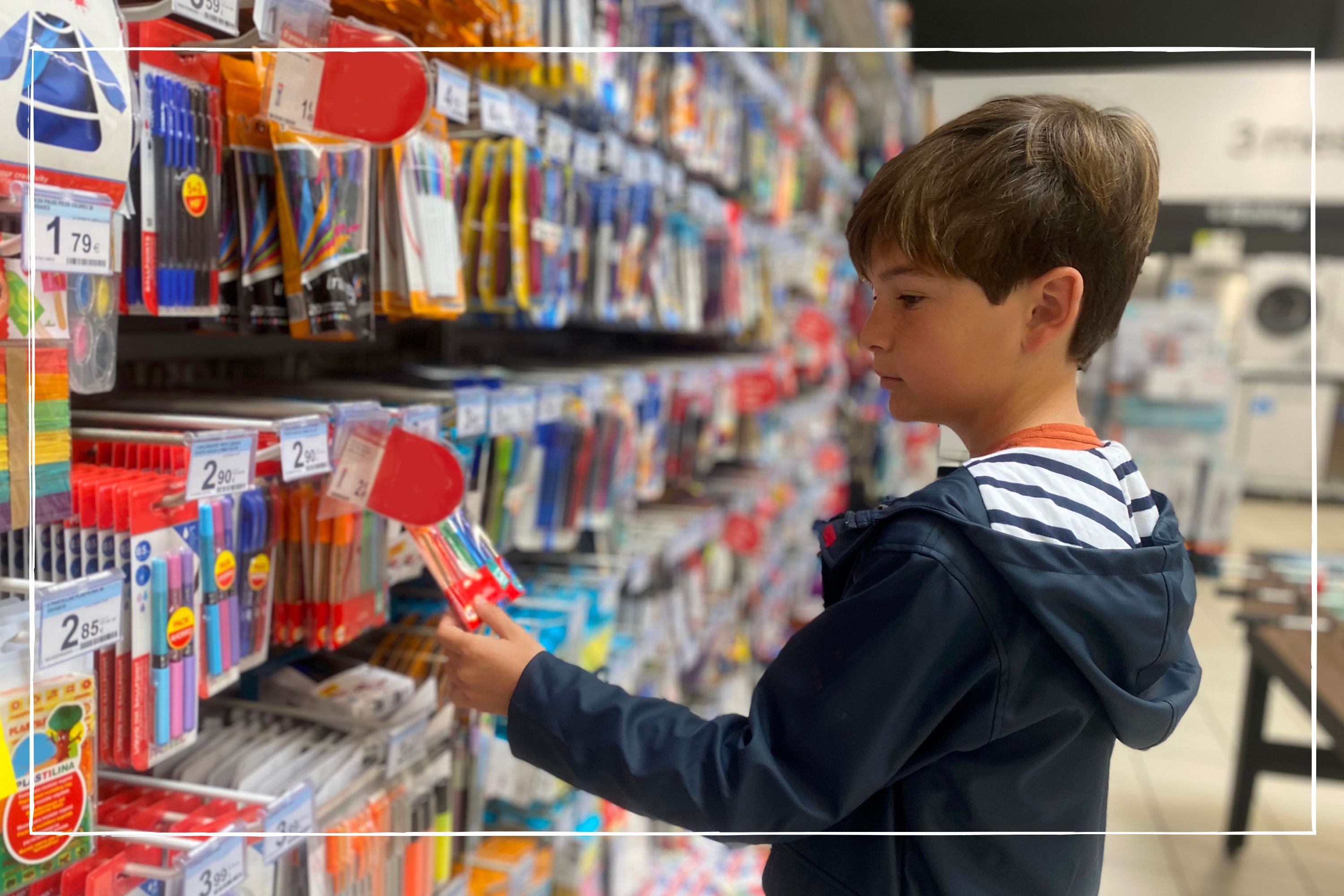How much does it cost to run your Christmas lights? Our finance expert has done the sums
If you’re curious to know how much does it cost to run Christmas lights, we’ve crunched the numbers to find out


With Christmas only a matter of weeks away, you might be wondering how much does it cost to run Christmas lights? It’s an important question to ask considering energy bills remain at record highs.
Even though the government’s Energy Price Guarantee is now in effect and households have started to receive a £400 energy rebate, families remain concerned about how much their energy bills will cost.
As a result, a sixth (16%) of UK households won’t be putting up their Christmas lights this year, while just over a quarter will be putting up fewer lights in a bid to save on energy costs, research from Go.Compare shows.
Go.Compare’s energy expert, Gareth Kloet, told us: “It’s not surprising that more people will be reconsidering putting up their Christmas lights this year, and completely understandable. With still no real end in sight to the energy crisis and the cost-of-living increases, people will undoubtedly be looking to cut back on some of the festivities this Christmas.”
How much does it cost to run Christmas lights?
It costs 0.12p an hour to run a typical 3.5W set of LED Christmas lights, with approximately 200 bulbs. If you switched your lights on for six hours a day, that would cost you 0.71p a day, 5p per week or 21.7p per month.
However, exact running costs will depend on the type of lights you have (LEDs will be much cheaper than traditional incandescent bulbs), how frequently you use them and how much you pay for your energy. For our calculations, we’ve used the Energy Price Guarantee’s electricity unit price of 34p per kWh.
Les Roberts, content manager at energy comparison site Bionic, says: “The running cost of Christmas lights can be worked out once you know the wattage and how much your electricity costs per KW. Your Christmas lights should have their wattage on the label, in the instructions or on the box. Once you have the wattage, divide the number by 1,000 to find how much energy the lights will use in the hour (known as the kilowatt hours or Kwh). Once you have calculated the kilowatt-hours and know your energy rate you can work out how much your lights cost in a time scale.”
GoodtoKnow Newsletter
Parenting advice, hot topics, best buys and family finance tips delivered straight to your inbox.
The table below illustrates how much it costs to run different types of Christmas lights.
| Header Cell - Column 0 | Cost per hour | Cost per day | Cost per week | Cost per month |
|---|---|---|---|---|
| 3.5W indoor string LED lights | 0.12p | 0.71p | 5p | 21.7p |
| 4.2W indoor cluster LED lights | 0.14p | 0.86p | 6p | 26.05p |
| 4.6W outdoor light-up reindeer (LEDs) | 0.16p | 0.94p | 6.57p | 28.52p |
| 7W outdoor icicle LED lights | 0.24p | 1.43p | 10p | 43.41p |
| 8.4W giant Christmas inflatable (LEDs) | 0.29p | 1.71p | 12p | 52.1p |
| 40W incandescent Christmas string lights | 1.36p | 8.16p | 57.12p | £2.48 |
| 175W incandescent outdoor lights | 5.95p | 35.7p | £2.50 | £10.85 |
As you can see, using modern LED Christmas lights will cost you considerably less compared to traditional incandescent Christmas lights.
Use this comparison table to compare how much your most-used appliances cost to run:
How to cut the cost of running Christmas lights
Data from Festive Lights shows that demand for energy-saving lights has increased by 85% in the last month as families look for ways to enjoy the festive season for less. In light of this (no pun intended), here are some tips to help you cut the cost of running your Christmas illuminations:
Switch to LEDs
If you’ve got some traditional incandescent lights tucked away in the loft, it’s worth swapping them for some new LED lights instead.
Gardening expert at Hayes Garden World, Angela Slater, says: “LEDs are 5 to 10 times more economical than the traditional filament lights that we all used to run; this is because they use a lot less power to achieve the same light. As a bonus they are low voltage which is safer and they are cold to the touch, so essential if you have small children in the house. Other benefits are that the bulbs are practically unbreakable and they last an average of 10,000 hours.”
Reduce the number of lights
Another easy way to save some cash is to cut back on the number of lights you have around the home.
Energy expert at Housetastic.co.uk, Paul Newman, told us: “Try to stick to just a couple of strings, and position them somewhere you will see the most benefits, as buying a surplus of lights can really push up energy bill costs.”
Use a timer
Many modern versions of Christmas lights come with their own timer which makes it easy to keep them on for a limited time. If your lights do not have a timer, consider purchasing a smart plug to use alongside them.
“Smart plugs can be controlled using an app on your phone, allowing you to set a timer for lights to be switched off. This ensures that lights are not left switched on for an extended period of time,” explains energy expert Paul Newman.
Alternatively, PropertyRescue’s Callum Woodstock says: “Set alarms on your phone to remind you to turn off the lights before bed and ensure that you only have your lights on between twilight and bedtime.”
Switch to battery-powered or solar lights
Another option is to use battery-powered lights rather than electric lights. William Hobbs from trades matching site Myjobquote.co.uk says: “Although you’ll have to purchase batteries to power them, this won’t cost as much as electricity and battery lights tend to last a while before the batteries need to be replaced. To save even further money, consider purchasing rechargeable batteries.”
For outdoor lights, it can be worth using solar powered lights as these are powered by the sun and won’t cost you anything to run.
What features should you look for when buying Christmas lights?
When buying Christmas lights it’s important to do your research. As well as looking for lights that are more energy-efficient, look for ones that include a timer for six to eight hours a day.
Angela Slater from Hayes Garden World says: “Make sure you purchase from a reputable supplier and that there is an energy label on the packaging as there are cheap imports available which are not guaranteed to be safe and the LEDs are in fact cheaper lookalikes. Make sure you are buying exactly what you need and that the lights are fit for purpose. If lights are not labelled as being suitable for outdoors, don’t use them outside as they could short out and fuse the lights.”
If you are searching for lights for your Christmas tree, it’s important to choose the right cable length. Michael Meiser from lighting specialist Lumilum, says: “The general rule is 15 metres for a six-foot tree and five metres above or below for a foot higher or lower. But don't just look at cable length, as bulb size and spacing can vary. Another way to look at it is 100 lights per foot and a half of the tree, or double that number if you want your tree to really sparkle. The main thing is not to overload your tree with too many lights or cables, as these can get tangled or cause a fire in severe cases.”

Mum of two, Rachel is a freelance personal finance journalist who has been writing about everything from mortgages to car insurance for over a decade. Having previously worked at Shares Magazine, where she specialised in small-cap stocks, Rachel developed a passion for consumer finance and saving money when she moved to lovemoney.com. She later spent more than 8 years as an editor at price comparison site MoneySuperMarket, often acting as spokesperson. Rachel went freelance in 2020, just as the pandemic hit, and has since written for numerous websites and national newspapers, including The Mail on Sunday, The Observer, The Sun and Forbes. She is passionate about helping families become more confident with their finances, giving them the tools they need to take control of their money and make savings. In her spare time, Rachel is a keen traveller and baker.
-
 How to save money: 28 family-friendly money-saving tips for mums and dads
How to save money: 28 family-friendly money-saving tips for mums and dadsUnderstanding how to save money is key to limiting the impact of rising costs as much as possible
By Sarah Handley
-
 14 hidden benefits of your Amazon Prime membership
14 hidden benefits of your Amazon Prime membershipWe reveal the less-obvious perks of a Prime membership that will help you get the most value out of your subscription fee
By Rachel Wait
-
 14 surprising ways to spend your Tesco Clubcard vouchers - from restaurants and cinema passes to mini breaks and Disney+
14 surprising ways to spend your Tesco Clubcard vouchers - from restaurants and cinema passes to mini breaks and Disney+Tesco Clubcard vouchers can help you cut the cost of everything from groceries and travel to days out and cinema tickets
By Heidi Scrimgeour
-
 How to get Disney+ for free and save up to £79.90 a year
How to get Disney+ for free and save up to £79.90 a yearEven though the streaming giant ended its free trial offering, there are still multiple ways you can get Disney+ for free for up to 12 months
By Sarah Handley
-
 Parents of teens who have just taken their GCSEs urged to check child benefit status ahead of August deadline
Parents of teens who have just taken their GCSEs urged to check child benefit status ahead of August deadlineWith a child benefit deadline looming, some parents could see their payments reduced or stopped altogether - here's why
By Sarah Handley
-
 Parents should hold off buying this back to school staple 'as close to their first day as possible', says retailer
Parents should hold off buying this back to school staple 'as close to their first day as possible', says retailerWith parents turning their attention to kitting their kids out for the new school year, research suggestions which items should be left until the last minute
By Sarah Handley
-
 7 ways to save on back to school essentials, as its revealed parents will spend £2.3 billion in 2024
7 ways to save on back to school essentials, as its revealed parents will spend £2.3 billion in 2024We share ways you can get your child all the bits and bobs they need for the new school year, without breaking the bank
By Sarah Handley
-
 What day is child benefit paid around the bank holiday? Everything parents need to know
What day is child benefit paid around the bank holiday? Everything parents need to knowKnowing which day child benefit is paid when it comes to the bank holiday can help families plan their budgets accordingly
By Sarah Handley